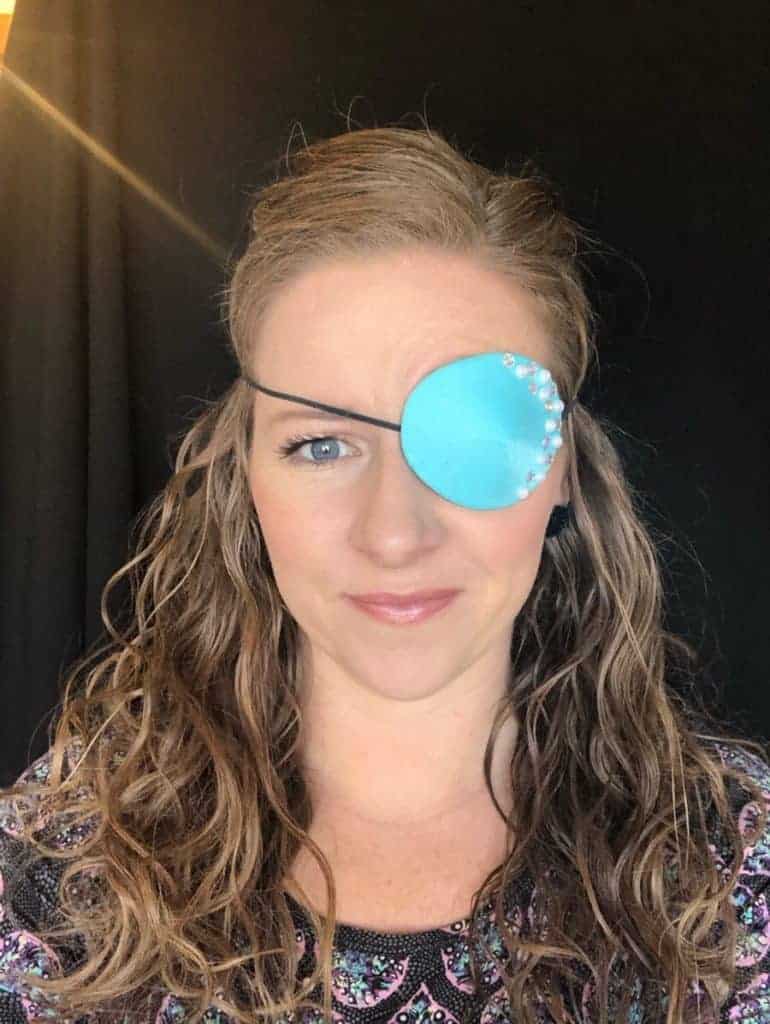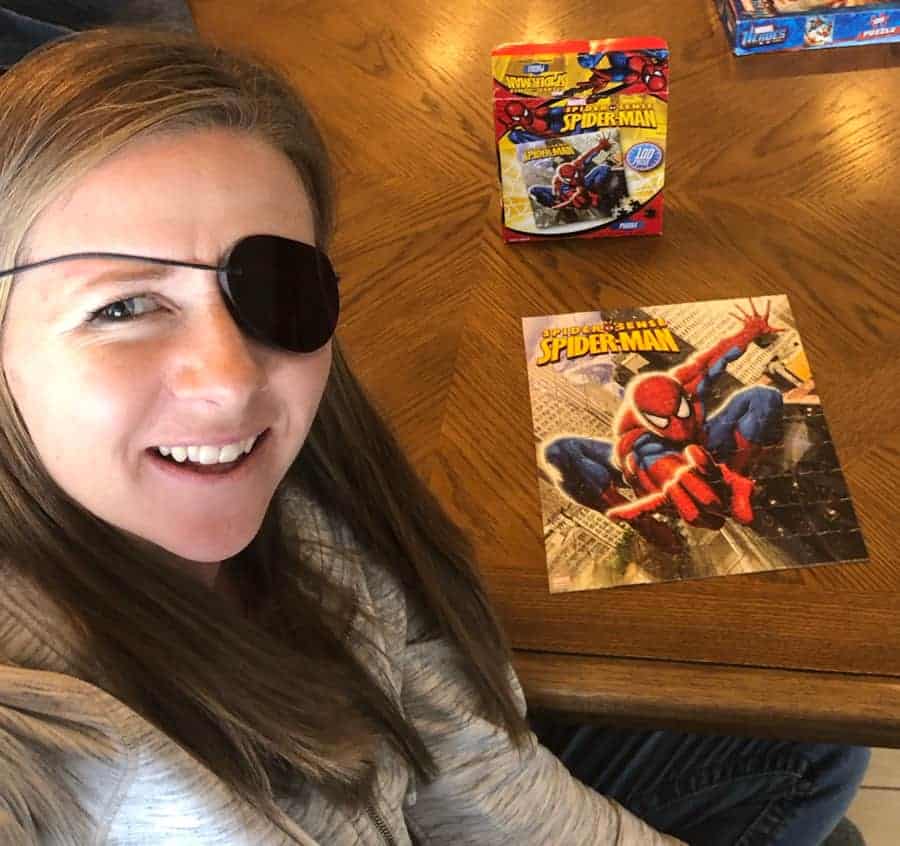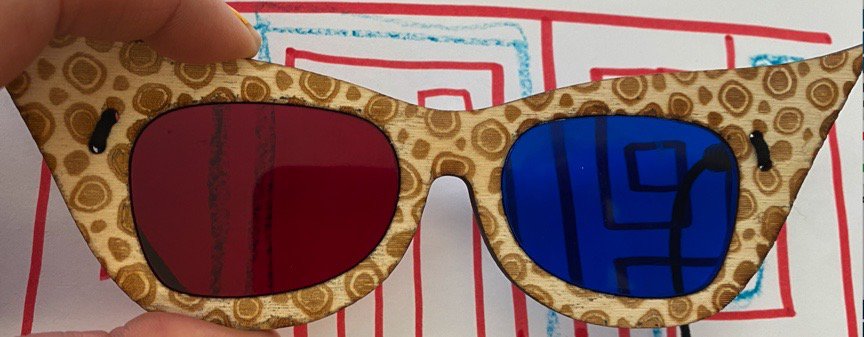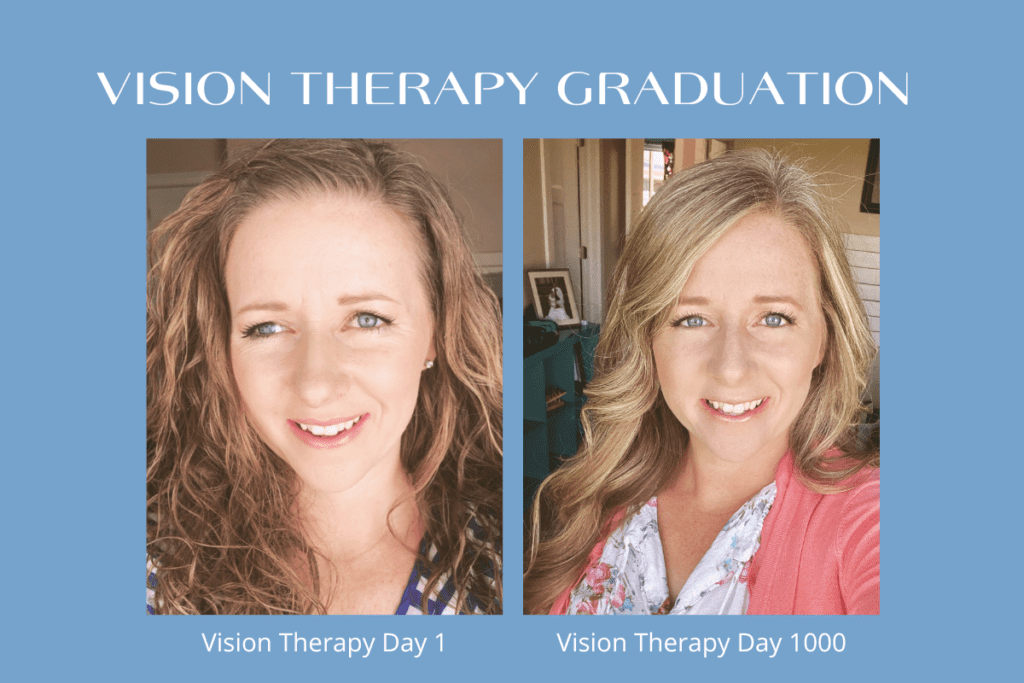If you have amblyopia (lazy eye) or strabismus (eye turn) as an adult, it is likely that you have a weak eye that is being suppressed that hasn’t worked for years. With childhoods full of patching, many of us turn back to that timeless treatment as adults to fix our eye problems, I know I did. The process was full of unexpected surprises, some good and some very very challenging.
So what can you expect with patching as an adult? Forcing your weak eye to work is going to push your brain to the limit. While patching the first time you will likely feel exhausted, nauseous, irritable, off-balance, and clumsy. Finding the right words will suddenly become a challenge and you will likely feel frustrated. Patching can help improve the sight in a lazy eye, and over time, these symptoms will lessen quickly. Patching will not change eye alignment or help the eyes work together.
Patching is not easy, and sometimes it might not even be worth it, keep reading to learn more about patching as an adult.
What to Expect the First Time You Patch
The severity of amblyopia differs drastically from patient to patient. One person may be legally blind in their “lazy eye” while the next can have 20/25 vision in the “lazy eye” even though they may still have poor functioning in that eye.
Either way, if you have been suppressing your weak eye, forcing it to work by patching the strong eye is not going to be easy. If you aren’t sure if you are suppressing or using both eyes together, take the free quiz “Do My Eyes Work Together?” to help you learn more about your vision.
Once the strong eye is covered with a patch, the brain must completely adjust its view of the world which will impact balance and coordination drastically making you feel dizzy and nauseous.
You might experience a burning sensation behind the eyes, and feel extremely tired. The number of times I feel asleep while patching is excessive. Closing my eyes provided immediate relief.

Using the weak eye is such a workout for your brain that other cognitive areas might suffer while you patch. You may notice that you are fumbling for words, struggling to speak in complete sentences, misspelling words, or extra irritable and impatient.
I remember feeling so frustrated, looking at my husband and asking, “am I ever going to be smart again?”
Over time, my brain adjusted and I experienced improvements in all of those areas, but those first days were very challenging.
How to Decrease Symptoms from Patching
Lessening these side effects is possible and I found a few things that make a BIG difference.
- Eating Healthy- Download my free “Eating for Stereopsis” guide HERE. When your brain is fueled with the right nutrients, it can handle the changes and become more flexible.
- Sleep- Using a suppressed eye is exhausting for your whole body. Extra sleep makes a huge difference.
- Time- Just allow it to be hard and give it time. When you stop resisting and being angry at your body, it will adjust much more quickly.
Is Patching Going to Fix my Lazy Eye?
This question has been in heated debates for the last 100 years. Patching rarely yields a quick result of clear vision. It takes months and even years sometimes to reawaken an eye, but it can help. The success definitely depends on how the patching is done.
For example, if a person wears a patch for 5 hours while lazily watching TV, they will see little benefit from it, while a person who patches while doing specific eye exercises is likely to see major improvements.

Assuming the patching is done in combination with eye exercises to strengthen the weak eye (tracking, saccades, focusing, reading, etc) Let’s take a look at what patching can and can not do for an amblyopic (lazy) eye.
| What Patching Can Do | What Patching Will NOT Do |
| Improve acuity in lazy Eye | Take away an eye turn |
| Improve tracking in lazy Eye | Improve fusion of both eyes |
| Improve peripheral in lazy eye | Train stereo vision |
| Improve focusing in lazy eye | Improve binocular vision |
Patching definitely has a place in treating amblyopia. In order for the eyes to work well together, they both need to have similar acuity and skill levels, but patching will not fix all of your problems. Many times, the reason for amblyopia is that the brain isn’t using both eyes together so one eye is suppressed to avoid double vision.
Waking up and strengthening the weak eye is great, but you must get to the root of the problem by teaching the brain to use the eyes together. Patching can help set the foundation for improving binocular function, but in-office vision therapy is going to make a 10x bigger difference than patching alone.
Does Patching Work for Adults?
Yes and no.
It definitely works faster and more effectively for young children. BUT there is plenty of science to prove that the brain can still learn and change, even when you are older, it just takes more time.
Patching on its own probably won’t make much of a difference for adults though, going with some alternative solutions is going to make a big difference.
What are Alternatives to Patching?
Patching has traditionally been done with either a cloth or sticker patch completely occluding the strong eye for the last 200 years. Since then, there have been some major improvements in this realm!
Patching Alternatives
- Atropine Drop– An eyedrops that blurrs the vision in one eye for a specified amount of time.
- Prosthetic Contact Lens– a contact that blocks or partially blocks vision (read more here)
- Scotch Tape- Taping over part or all of the lens over your strong eye blocks central vision, but allows peripheral in both eyes to still work together.
- Red Lens Patch– Filters what the eyes can see. Only the weak eye can see the colors red, orange and yellow so it is strengthened, but the brain can still work on some fusion with both eyes. This is done with specific therapy activities. (Learn more here)
- Dichoptic Glasses– Red/green or red/blue glasses can be used similar to a red lens patch. The weak eye is forced to work which is similar to patching, but binocular vision is worked at the same time. (Learn more or Purchase)
- In-Office Vision Therapy- Most VT offices don’t require long lengths of patching. They use other types of lenses and exercises that improve function of the weak eye and binocular vision at the same time. (Find one here)

Can Lasik Fix my Amblyopic Eye?
This is a complex question, but the short answer is no. Simply put, lasik can fix the same things that glasses can fix. If your vision is clear with glasses and blurry without them, lasik can help.
If the vision in one or both eyes is blurry with or without glasses (normal in amblyopia or lazy eye), there is a brain problem, not just a physiology problem with the eyes. Lasik won’t help in these situations. The brain must be rewired to use both eyes together.
Conclusion
If you would like help figuring out where to go with your vision, I have so many options. Everything from free quizzes and an eating guide to a course about peripheral and zoom consults with me are available over HERE.
Before finding official vision therapy, I tried patching for 5 hours each day for almost 6 months. After the first week, the horrible symptoms lessened, but I didn’t start seeing improvements for 6-8 weeks. Those improvements started when I decided to be more intentional with my patching time. I started using patch time to read, do puzzles, trace, and do eye stretches and I started noticing improvements.
The real improvements started coming and sticking when I switched over to full time vision therapy. My optometrist switched out a traditional patch for a red lens patch and red/green glasses activities and added a host of other unique exercises and my vision took off.
Getting to the point where I could use both eyes was what finally helped to strengthen my weak eye. My weak eye has become much stronger and I also have gained 3D vision and so much more. Before starting a patching journey, I definitely recommend meeting with a developmental optometrist to see if there is a more efficient and effective way to treat your lazy eye. I can help you find an office for free over HERE.
It’s not easy, but it is possible and you can do it too.

